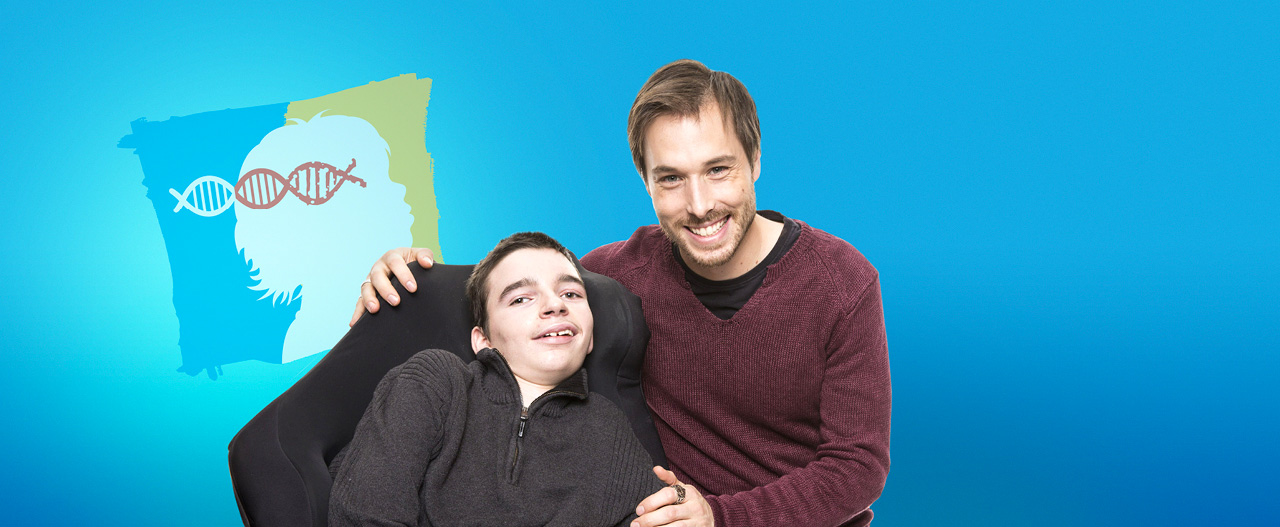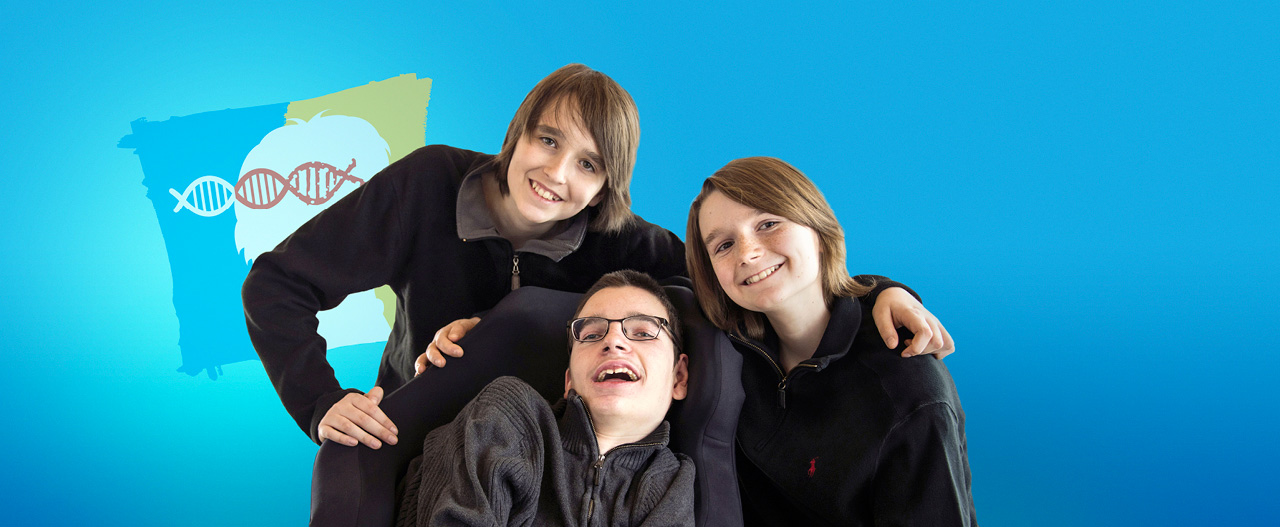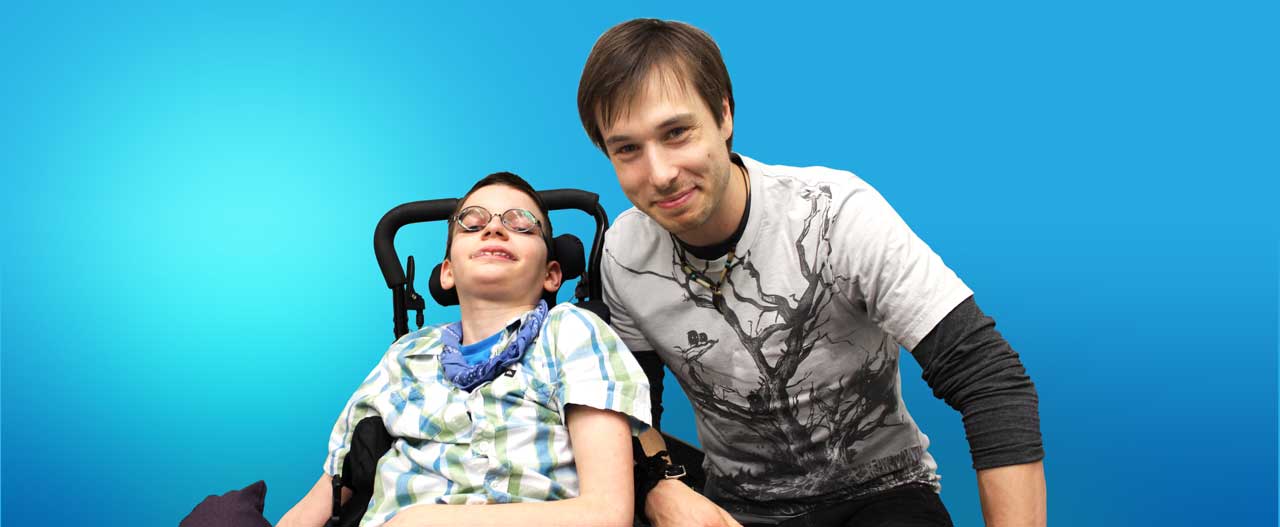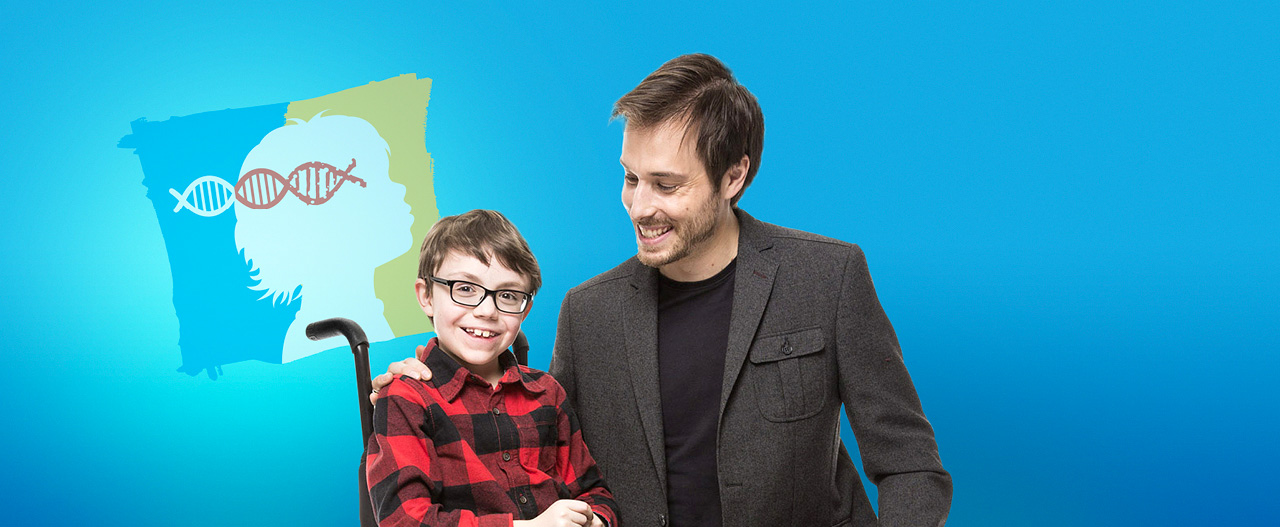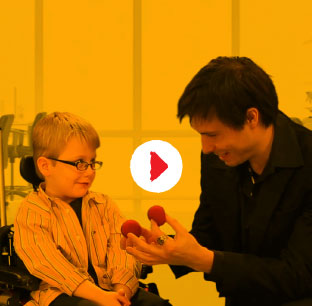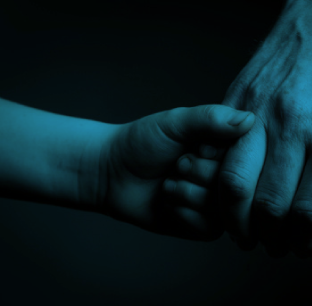What is Leukodystrophy?
A Leukodystrophy is any one of a group of genetic diseases affecting the central nervous system.
Myelin, also known as “white matter,” is made of a fatty substance that insulates the nerves found in the brain (central nervous system) as well as those controlling our body’s muscles (peripheral nervous system). Its role is comparable to the sheath found around electrical cables.
This insulating layer helps electrical signals travel efficiently through the nerves. Leukodystrophies alter the mechanisms that form or preserve this very important layer. All leukodystrophies are degenerative which means that this tissue continuously deteriorates at a rate that can differ from one type to another. This is why the physical condition of children affected by this disease can sometimes deteriorate very quickly. And degenerative means fatal. There is currently no way to stop this disease’s progression and there are many types of this disease.
Did You Know?
TAll leukodystrophies are fatal within a short or medium term basis. About 30% of leukodystrophies are an undetermined type, and there is currently no cure for any of them. Parents of children with the disease generally have a 1 in 4 chance that their other children will also be affected. 1 child in 7600 is affected.
Definition
Originates from the Greek words “leukos” (white), “dys” (trouble) and “trophy” (food).
The term Leukodystrophy applies to a group of genetic diseases affecting the myelin in the central nervous system.

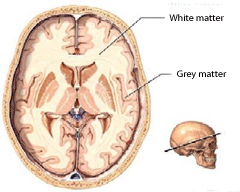 Myelin is a white substance in the brain and spinal cord that envelops the nerve fibres much in the same way as sheath insulates an electric cable. It is the substance that enables proper transmission of nerve messages.
Myelin is a white substance in the brain and spinal cord that envelops the nerve fibres much in the same way as sheath insulates an electric cable. It is the substance that enables proper transmission of nerve messages.
With leukodystrophies, myelin has difficulty forming, maintaining itself, and sometimes there is even too much of it. The result is poor nerve impulse conduction and results in a number of consequences on the organism. Motor functions (shaking, stiffness, balance), vital functions (breathing, swallowing) as well as the senses (sight, hearing, smell, taste, touch) can be affected in varying degrees as the disease progresses.
Leukodystrophies can occur at any age and they manifest themselves differently depending on the location of the affected myelin, the stage of the disease, and the type.
The Disease’s Mechanism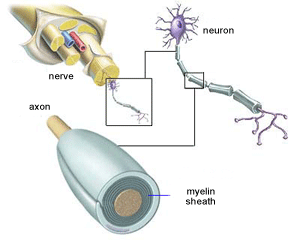
Each genetic anomaly changes the myelin sheath. In all cases, these modifications disturb the myelin’s function. Nerve messages are no longer properly transmitted. For example, if the brain’s region for processing images is affected, it can lead to partial or total blindness even though the organ of sight (the eye) remains perfectly intact. It’s the transmission of nerve impulses from one region of the organism to another that is disturbed. Therefore, all motor, sensory, and intellectual functions may be affected in varying degrees.
The Disease’s Manifestations
Clinical manifestations differ depending on the type of Leukodystrophy.
However, in general, the neurological manifestations that occur at any age are usually progressive:
-
balance disorders
-
tremors (ataxia)
-
motor function disorders (walking, running)
-
intellectual function disorders (comprehension, memory, behaviour)
-
sensory function disorders (vision, hearing)
Without treatment, all of these manifestations worsen at a quicker rate, leading to total paralysis, blindness, deafness, as well as the inability to speak and to eat normally. Leukodystrophies, however, evolve variably from one type to another and from one patient to another. Generally, the earlier it manifests in life, the more quickly it progresses.
Transmission Methods
There are two ways for leukodystrophies to be transmitted depending on the type. The first transmission method is linked to gender and involves the X chromosome in which boys have a 50% chance of being sick as well as carriers of the defective chromosome. Girls, in turn, cannot be sick via this method but they still have a 50% chance of carrying the defective chromosome. The other transmission method is called “recessive autosomal”. The term recessive comes from the fact that both parents must be healthy carriers of the same defective gene in order for the disease to be transmitted. Therefore, it is not linked to the X chromosome and affects boys as well as girls.
Gender-Related Transmission
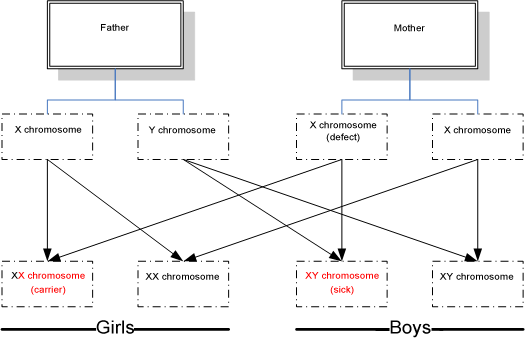
In the previous diagram, you can see that the girl on the far left will be a healthy carrier because the healthy X chromosome will compensate for the defective one received from her mother. However, the boy has no chromosome to compensate for the defective X chromosome. He will therefore be ill.
Among leukodystrophies whose transmissions are linked to gender, there are Adrenoleukodystrophy, Adrenomyeloneuropathy and Pelizaeus-Merzbacher’s Disease.
Recessive Autosomal Transmission
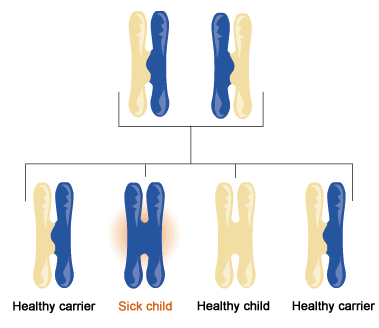
In this transmission method, both parents must be a healthy carrier of the same defective gene. There will then be a 50% chance that their children will be healthy carriers and therefore likely to transmit the same defective gene to their children. One in four children will be an unhealthy carrier and one in four children will not carry the defective gene. This kind of genetic transmission occurs with Metachromatic Leukodystrophy, Krabbe disease, Canavan disease, CACH syndrome, Macrocephalic and Cystic Leukodystrophy, as well as Aicardi-Gouttieres Syndrome.
Known Types of Leukodystrophy
At the present time there are about 15 types of Leukodystrophy whose mechanisms are fairly well understood. Currently, about 30% of leukodystrophies diagnosed are of an undetermined type.
| Form | Affected myelin component | Heredity | Identified gene | Prenatal diagnosis | Therapy |
|---|---|---|---|---|---|
| Metachromatic leukodystrophy | Sulphatide | Autosomal recessive | Yes | Yes | Bone marrow transplantation (juvenile form) |
| Krabbe disease | Galacto-cerebroside | Autosomal recessive | Yes | Yes | Bone marrow transplantation (juvenile form) |
| Adrenoleukodystrophy-Adrenomyeloneuropathy | Very long chain fatty acids (VLCFA) | Yes | Yes | Bone marrow transplantation (juvenile form) | |
| Pelizaeus-Merzbacher disease | Proteolipid | Gender related | Yes | Yes | No |
| Canavan disease | N-acetyl aspartate acids | Autosomal recessive | Yes | Yes | No |
| CACH syndrome | ? | Autosomal recessive | No, located on chromosome 3 | No | No |
| Leukodystrophy with Macrocephaly and cysts | ? | Autosomal recessive | No, located on chromosome 22 | No | No |
| Aicardi-Goutires syndrome | ? | Autosomal recessive | No | No | No |
| Alexander's disease | ? | Sporadic | No | No | No |
| Zellweger syndrome | Autosomal recessive | Many chromosomes concerned | Yes | ||
| Refsum disease | Autosomal recessive | Many chromosomes concerned | Yes | ||
| Megalencephalic | Autosomal recessive | Oui | Yes | ||
| Leukodystrophy | |||||
| Unknown Leukodystrophy |
Treatments
There are a few possible treatments for some types of leukodystrophy. For example, Adrenoleukodystrophy, Krabbe Disease and Metachromatic Leukodystrophy (see table) can be treated with an attempted bone marrow transplant. In some cases it may stop the disease from progressing or even make it regress. It involves significant risk and cannot be performed on patients for whom the disease was discovered too late. For other types, there are only symptomatic treatments that will only alleviate the problems caused by the disease’s progression.
Research
Isolating the gene can be considered a first step in identifying the deficient protein. Purifying it could lead to a pharmaceutical solution for some leukodystrophies.
Replacing deficient genes (gene therapy) is already being studied for three types of leukodystrophies (Adrenoleukodystrophy, Metachromatic Leukodystrophy and Krabbe Disease).
Rebuilding the destroyed myelin is potentially very promising for the long term and is currently the subject of active research (Projet Myéline and others).
A strong effort should be made to identify the biochemical and genetic mechanisms that are currently responsible for at least 30% of leukodystrophies whose causes are unknown (unidentified and undetermined types).
Transplanting Schwann cells is promising even though it is still in the preliminary stages.
In other words, even though a lot of research is currently underway, no treatment to date has successfully saved the lives of these children.


